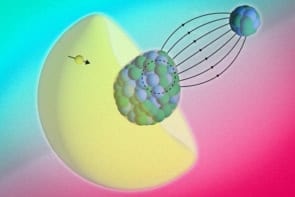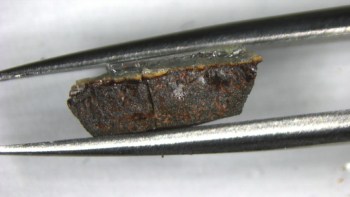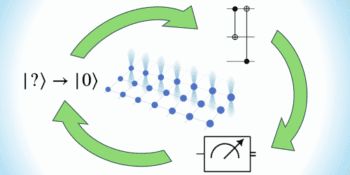Researchers in France have made a breakthrough in nuclear magnetic resonance (NMR) spectroscopy that allows the technique to be used effectively on nanolitre-sized solid samples for the first time. The new method involves the use of two coils -- one stationary and one rotating at up to 70 kHz -- and allows the highly-sensitive magic angle spinning (MAS) NMR technique to be applied to tiny samples. The researchers claim the approach could eventually be used to study chemical processes in a single biological cell (Nature 447 694).
NMR spectroscopy is a popular technique for studying the physical and chemical properties of matter because it is non-invasive and can distinguish between different species of atomic nuclei. It involves placing a sample in an external magnetic field, which aligns the magnetic moments of atomic nuclei with non-zero spin. A radio-frequency pulse is then applied to the sample, which perturbs the alignment of the magnetic moments and makes them wobble. The precise nature of this wobble is detected via currents that are induced in a coil surrounding the sample. The signal from the coil is used to create a NMR spectrum that contains information about the chemical and physical environment surrounding the nuclei.
For small samples, however, these induced currents can be tiny and difficult to distinguish from thermal noise. In the case of liquids, this problem can be overcome by making the coil as small as possible and placing the sample inside it. But this approach cannot be used for solids because the nuclei have a fixed position with respect to the external magnetic field, which means that structures in the NMR spectrum are smeared out and tricky to interpret.
Scientists can get around this problem by rotating solid samples rapidly at an angle of 54.7° to the magnetic field. This technique, known as “magic-angle” spinning (MAS), averages away much of the smearing and leaves a high-resolution spectrum similar to that seen for liquids. Unfortunately, no one has been able to build a device that could spin a tiny solid sample at 50 kHz or more, while the sample is inside a stationary coil any smaller than about 1 mm diameter.
Now, however, Dimitrios Sakellariou and colleagues at CEA Saclay have found a clever way around this problem. The researchers wrapped a small coil of 750 µm diameter directly around a 200-nanolitre solid sample and spun the coil along with the sample at up to 70 kHz. A second static coil was placed around the spinning ensemble and this static coil detected the NMR signals from the sample via inductive coupling to the spinning coil. The new method achieved a signal to noise ratio that was eight times better than a conventional MAS employing a coil of 2.5 mm diameter.
The researchers have dubbed their technique magic-angle coil spinning (or MACS) and, according to Art Edison at the University of Florida, the technique is essentially a simple modification to conventional MAS, so existing hardware can be used. As a result, the technique could be used in automated high-throughput NMR studies for looking at many samples in a short period of time.
The technique could also be used to study tiny biological samples such as cell cultures and forensic evidence and Sakellariou believes that the technique could someday be used to observe the chemical processes inside single biological cells.



